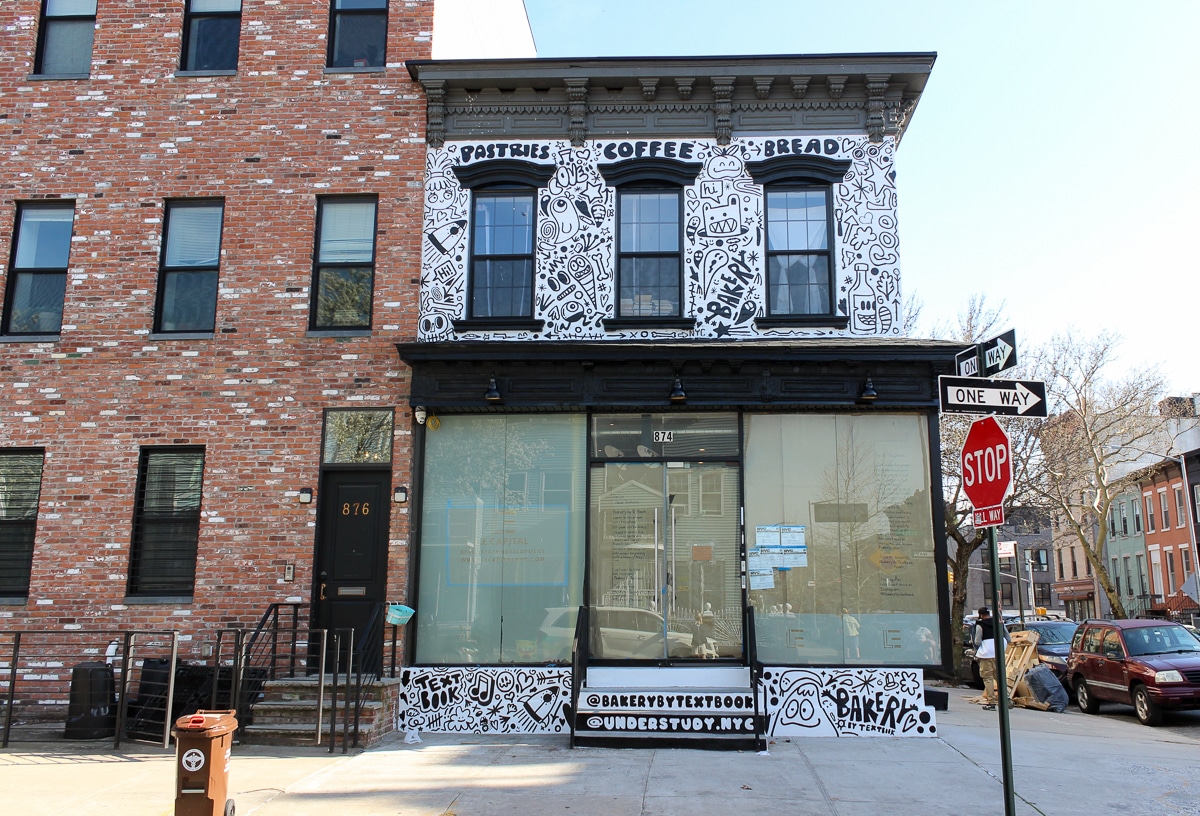Walkabout: The Death of Bismark
The histories of some of Brooklyn’s small parks will continue next time, but I need a break. In the course of researching Tompkins Park, I came across this tale, which I share with you today. It all began with a letter to the editor of the Brooklyn Eagle, printed on the last day of the…


“To the Editor of the Brooklyn Eagle: Won’t you print something to make people on our block in Van Buren Street, between Tompkins and Throop Avenues, stop poisoning pet cats? They poisoned my Bismark yesterday. He was 1 year, 9 months and 7 days. I am 9 years old. He was a lovely cat, black and not a white hair on him. He was beautiful. He taught our dog Fritz how to wash his face with his paw. He would steal bones from the kitchen table and throw then down to Fritz. He and Fritz would play tag on the street together and would go walking to the park together. He caught four rats in two hours the other day. Someone kept stealing the ribbons and bells from his collar and now they have poisoned him. We found his body on the street this morning and buried him in the back yard, and Fritz tried to dig him up. Won’t you tell folks to keep their cats home and can’t you make those mean people ashamed of themselves? I couldn’t help but cry over it.” Myra Louise Matthews, 33 Van Buren Street.
Well, who could not just tear up over that story? The editors of the Eagle couldn’t, and launched an editorial, and, after the New Year’s Day holiday, an investigation. The editorial, which appeared after the letter, excoriated the poisoner of cats. The writer went over to Van Buren Street, and described the neighborhood. “A quieter and calmer neighborhood would be difficult to find anywhere in Brooklyn,” the reporter wrote. Miss Matthew’s street was full of old growth trees which were “planted when Tompkins Avenue was a suburb,” he said, and the houses were frame, with wide porches facing cobblestone streets.
The writer visited the Matthew’s home, and found the family in mourning. His writing got more and more turgid as he too, mourned the loss of this beloved pet. “This is the first day that the Matthews family has spent without the company and protection of Bismark. Fritz, the dog, washes his face the way Bismark taught him, in silence and occasionally, with his other paw, wipes away a tear. The bones which Bismark was wont to throw to him from the plateau known as the kitchen table will remain unmolested, and Fritz will be forced to take his meals from human hands instead of feline paws.”
After talking about how sad Fritz would be in Tompkins Park now, as each tree and patch of earth would remind the dog of better days when the two animal friends romped in the park, the writer turned his attention to the poisoners of Bismark. “Boys”, he said, 13 or 14 years of age, were probably the culprits, “youthful slanderers of the medical profession”, who heartlessly mistake beloved pets for lab specimens, and cruelly kill them in order to experiment. “Many, many times has this been done, and equally often, some little mistress wonders out loud and to herself why is it that Tabby or Aristophanes or Tiny doesn’t come home.”
The loss of Bismark, the tears of a child, and the beginning of a new year in a new century brought out the neighbors, which in turn led to more investigative reporting by our intrepid Eagle reporter. Two days after the initial letter and editorial, the paper printed a follow up story on the death of Bismark. It seems, according to neighbors, that Bismark had not been poisoned by youthful sociopaths. He had been clubbed to death by a cat-hating adult. “Peaceful as the neighborhood is, in the vicinity of Tompkins Park, there seems to be a number of persons dwelling nearby who have a strong, deep-rooted dislike for members of the cat tribe. The cat haters are not boys, but grown-ups who possess a chivalrous desire for a battle whenever the enemy is smaller than themselves.”
It turns out that one of the neighbors saw Bismark climbing a fence in someone’s backyard. As the cat walked across the length of the fence, someone threw a rock at him, stunning him. As the cat fell into this person’s yard, he took a stick and beat the cat to death. He then wrapped it up in paper and took it out into the street and left him there for Miss Matthews to find the next morning, the cat still wearing its ribbon collar with a bell on it.
The day the reporter was getting this story, neighbors on Van Buren Street were greeted with another furry body in the street. It was another black cat, left in front of the house across the street from Myra Matthews’ house. The young girl who answered the door told the Eagle reporter that this cat was Bismark’s father, and had been out in the back yard only yesterday. Now he too was dead. “We think the same person killed both of them,” the girl said.
None of the neighbors would give a name to the reporter, but certainly, they had their suspicions as to who the cat killer was. But, he closed his piece by saying, “their suspicions have yet to reach the stage when it is considered prudent to accuse anyone.” The death of Bismark and his father would be a mystery that was never solved.
Today, many of the houses on this block of Van Buren are much changed. The frame houses are still across the street from where Myra Matthews’ house stood, but the porches are long gone, and most of the houses are covered in vinyl siding, or asphalt tile. The old growth trees are a memory, with only one remaining. Myra’s house is gone, as is the entire row surrounding it, replaced by a small affordable housing complex. Only the feral cats remain, catching the rats of Von King Park, or being fed by sympathetic and kind-hearted neighbors. Perhaps some are the distant descendants of Bismark and his father’s kind; the ever-present sleek black guardians of Brooklyn’s backyards and streets, still haunting Bismark’s killer through eternity. GMAP









Letting Barbara bury Charlie in your back yard was really kind of you, dibs.
What a heartbreaking story. I hate people who are cruel to animals. and that poor little girl’s letter. There should be stronger laws to punish people who mistreat animals.